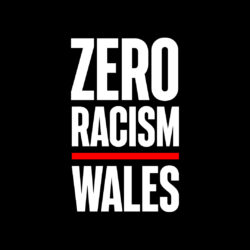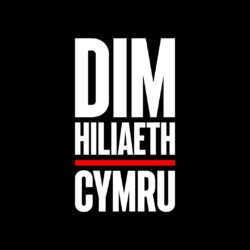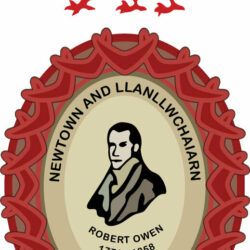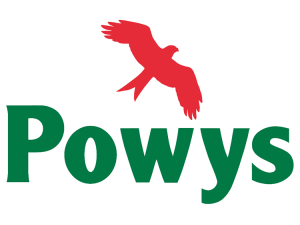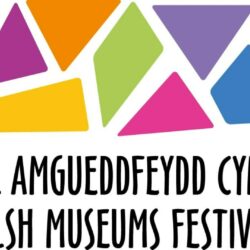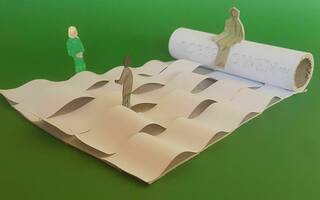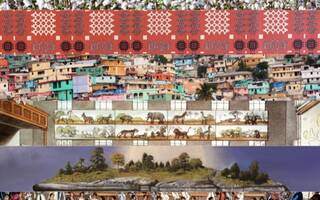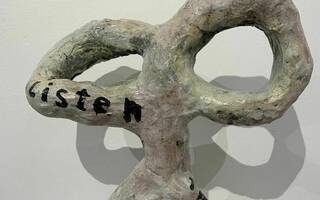Robert Owen Museum
Between September and November 2021 Rhian Davies worked with the Robert Owen Museum.
The Brief and Project Approach
• Revising and creating loan boxes for outreach programme.
• Develop an outreach programme within schools, with the intention to be useful to all community groups.
• Loan boxes and all material targeted at Primary Level and fully bilingual.
• Consultation with local schools and community groups to discover what would be the best form of information and loan boxes most suitable for their needs.
• All other outcomes to be agreed in consultation with the Robert Owen Museum.
Report by Rhian Davies
Whilst the brief remained the grounding basis for the Robert Owen Museum Outreach project, there were some changes in the focus of the museum’s objectives – namely the larger emphasis on developing a consultation with the local primary schools to discover what resources or themes would be best suited to their taught curriculum. This formed the first part of the project and from this developed the idea to create something tangible that could be used as a pilot for future resources and activities for primary school aged children.
As a visual person with an interest in tactile things, I felt it was almost necessary to develop the half-term activity packs to get a clearer idea of, as well as allow time to think through, the types of activities that might appeal to primary school aged children and the different routes for engaging with some of the broader themes of Robert Owen. This aspect of the project tied in with the Welsh Museums Festival 2021, which was also running during the October half-term week and allowed us to design and create 100 activity packs for children and families which could be collected by local people and visitors in Newtown.
Building on this I worked with Elinor, the Project Manager for the Robert Owen 250 Project, as well as Steffan from the Oriel Davies Gallery to think about how the museum could further develop its approach to engaging younger audiences. In addition, I also spoke to Kate and Deborah from the Oriel Davies Gallery about some of the ways in which the accessibility and inclusivity of a space could be improved.
Thinking through these strands, I brought together what I had learnt to design an example of a loan box that could be used or developed by the museum as part of their engagement programme with the local primary schools and the new Welsh curriculum.
Initial Communications with Local Primary Schools
At the start of this project, the museum had no current relationships with local schools and teachers. Previously contact had been made with three local schools but had not been followed up since.
With the assistance of Kate from the Oriel Davies Gallery, I was able to get in touch with seven primary schools local to Newtown. The aim was to reach out to see if the schools would be interested in meeting to discuss the project and how the Robert Owen Museum could develop resources and activities that would be relevant and accessible to the curriculum. The seven schools that were contacted were: Treowen; Penygloddfa; St. Mary’s; Ysgol Dafydd Llwyd; Calon y Dderwen; Maesyrhandir and Welshpool Church in Wales Primary.
I began by emailing each school before following up with several phone calls. There were some interested schools, but it seemed that time and teacher capacity was an issue due to it being the start of a new school year and with the continued disruption of Covid to teaching. Despite this however, the head teacher at Maesyrhandir gave some positive verbal feedback about the project saying that it was a brilliant idea for local school children to learn about the local area and a local, historical figure. Two teachers from Welshpool Church in Wales Primary also got in touch to show their interest, but unfortunately despite emails and a couple of phone calls it was difficult to get a further response from them.
Welsh Museums Festival 2021: Half-Term Activity Packs
As it was challenging to engage with local schools about what resources would be useful for them, I felt it was necessary to try an alternative route to test out a design and gather some feedback. It was decided that something tangible would be made and offered to the public to gauge responses and to act as a pilot in terms of design and content for future loan box designs.
To fund this part of the project, I applied to the Welsh Museums Festival 2021 which allowed for 100 activity packs to be designed and created for the October half-term week to a budget of £250.00. The theme for this year’s Welsh Museums Festival was medicine and wellbeing, which tied in with some of Owen’s work and views to improve the access of his workers and their families to the outdoors. Practically, centering the packs around the outdoors also meant that participants could collect a pack to complete in their chosen green space, minimising risks in terms of Covid.
The packs were aimed at children and families and centred around Robert Owen, the outdoors and wellbeing. Included in each pack was a bilingual booklet which contained a purposefully broad range of activities to test out a variety of approaches and contexts to see what might appeal to different types of learners and interests. Alongside the booklet was a pencil as well as two pots of paint and a sponge for a printing with natural objects activity. Other activities included: museum bingo; a breathing activity; creating a mini museum of natural objects and writing a note to the future about protecting and preserving our natural spaces.
An example of a half-term activity pack can be found in the ‘Robert Owen 250 Museum Outreach Project’ box.
“They will be surrounded by gardens, have abundance of space in all directions to keep the air healthy and pleasant. They will have walks and plantations before them.”
“In retrospect, my life appears to have been a mission to point out the cause of sin and misery, and how to attain a new existence of universal goodness, wisdom and happiness. By teaching the influence of surroundings, the earth will gradually be made a paradise and its inhabitants angels.”
~ Robert Owen
Collaborations
A meeting with the Youth Engagement Officer from Open Newtown was had to discuss a potential collaboration in designing the activity packs. Open Newtown are a community owned company who deliver community projects within Newtown, as well as overlook the maintenance of many of Newtown’s green parks and spaces. Due to several factors which included time and their need to engage with a different age group (16–25-year-olds), it was felt that the half-term activity packs may not be the right project to collaborate on at the time. The team however were keen to be involved with future projects as part of the museum and the wider Robert Owen 250 Project.
Cultivate, a local café and deli who also run a community food growing project, kindly became a pick-up point for the activity packs during the half-term week. Both Open Newtown and Cultivate helped to spread the word about the packs by creating and sharing posts on their social media channels. Both organisations’ work reflect the values of Robert Owen and having this shared interest worked to strengthen and increase the engagement of local people and organisations with the project.
Feedback
To gather feedback a QR code was placed on the front of each pack as well as on the last page of the activity booklet to lead participants to an online questionnaire. Unfortunately, we had no response to the online questionnaire. Rather, feedback about the activity packs was received as oral snippets from different people.
These bits of feedback should be kept in mind for future activity packs or design work at the Robert Owen Museum, to ensure that resources are accessible and user-friendly for all.
Three little boys came in today to get packs and they were all excited about having them. One was already talking about how he was going to print with the leaves – it’s already having that inspiring effect!
~ Staff member at Oriel Davies Gallery
My son loved it!
~ Staff member at Cultivate
We just had a group of young children in who completed the museum bingo section of their packs and were very excited to be offered a badge and sticker as a prize!
~ Staff member at Robert Owen Museum
A parent of a participant was pleased that the pack led to researching and reading more about Robert Owen online with their child. However, they felt that the first activity (Museum Bingo) could have had clearer instructions as they were uncertain whether to go to the museum or not. In addition, they felt that it would have been good to have more paper for each activity supplied.
Other feedback also touched on the design of the packs and how black text on white or brightly coloured backgrounds could be difficult to read and may be challenging for those who are neurodiverse.
Figures
Over the course of the October half-term week (Monday 25th October – Saturday 30th October), the packs were available to collect from three different spaces. These were the Robert Owen Museum, Oriel Davies Gallery and Cultivate café, which are all located in Newtown town centre.
During this period, the Robert Owen Museum handed out 16 packs, the Oriel Davies handed out 23 and Cultivate gave out 21. In total, 60 packs were distributed during this half-term week.
Indicative figures show that on average 22 people visit the Robert Owen Museum each week. If we assume that every child who received an activity pack was also accompanied by at least one parent or guardian then this would mean a minimum of 32 people visited the museum during the October half-term, a 50% increase on pre-Covid figures.
Marketing
The main marketing for the half-term activity packs was through social media platforms as well as websites. Posts were uploaded by the Robert Owen Museum, Oriel Davies and Cultivate. Through this, some posts were then shared to other pages by various organisations and social media users. Due to the short timeframe to advertise the half-term packs and in keeping with the £250.00 budget, social media pages seemed to be the most impactful route. Collaborating with Oriel Davies and Cultivate, who both have their own established following, allowed for the packs to reach wider and perhaps even new audiences and strengthened the project’s outreach. The packs were also advertised on the Welsh Museums Festival website as it formed part of a larger, national collection of events and activities happening across Wales.
To increase engagement with something similar in the future, it may be worth designing and printing posters to put up around Newtown as well as contacting or visiting specific groups within Newtown and the surrounding area who may be interested in participating. Although local papers weren’t used for the half-term packs, they would also help to increase engagement with Welsh community papers as well as the County Times and Advertiser engaging more specific audiences at a low cost. In addition, once the digital board outside of the Robert Owen Museum is back in use this could be another useful platform for displaying upcoming events and activities.
Robert Owen Museum Facebook Page, 17 October 2021
Robert Owen Museum is hosting a family-oriented event this half term week, as part of Museums Week in Wales. You can collect a full and colourful pack (see attached) from the museum so you can get busy over the half-term. The activities and materials provided are suitable for young children and families. Take to the outdoors and see what you can find in the green spaces near you. Available to collect from Monday 25th October to Saturday 30th October, from 11am to 3pm.
Click on the link below for more information
https://www.robertowenmuseum.c...;
(10 likes and 13 shares, including to Mid Wales Tourism Cymru, Credu Connecting Carers, Open Newtown and Newtown, Powys Community Notice Board)
Robert Owen Museum Facebook Page, 22 October 2021
Half-term week rapidly approaching. Got nothing to do?
Robert Owen Museum is hosting a family-oriented event this half term week, as part of Museums Week in Wales. You can collect a full and colourful pack (see attached) from the museum so you can get busy over the half-term. The activities and materials provided are suitable for young children and families. Take to the outdoors and see what you can find in the green spaces near you. Available to collect from Monday 25th October to Saturday 30th October, from 11am to 3pm.
Click on the link below for more information
(5 likes and 3 shares including to Newtown Breastfeeding Friends Group)
Robert Owen Museum Facebook Page, 29 October 2021
#robertowenmemorialmuseum Robert Owen A Journey into Nature. Your feedback would be gratefully received either scan the barcode QR Code or go to https://www.surveymonkey.co.uk...;
#welshmuseumsfestival
(3 likes and 9 shares)
Robert Owen Museum Facebook Page, 3 November 2021
As world leaders meet at COP26, to grapple with changes that humanity can make to reduce greenhouse gas emissions, we consider here that a significant place in Robert Owen's life, was New Lanark, just down the road from where the world leaders are meeting. Also Robert Owen Museum have emphasised the link between Robert Owen and Nature, and also Robert Owen and the Environment with a half-term activity pack given out at the museum during October 2021 and a talk by Iolo Williams earlier in the year at the museum.
Read about these links further here...
View an article about "Robert Owen and a Journey into nature", a recent event at the museum https://www.robertowenmuseum.c...;
And also view a video of a talk by Iolo Williams - https://www.robertowenmuseum.c...;
(8 likes and 1 share)
Robert Owen Museum Website, News Section, 17 October 2021
Link to page: A Journey Into Nature - Robert Owen Museum
Oriel Davies Website, News Section, 22 October 2021
Link to page: Free activity packs for children and families | Oriel Davies Gallery
Oriel Davies Facebook Page, 23 October 2021
As part of the Robert Owen 250 project the Robert Owen Museum have produced half-term activity packs for children and families, centred around the theme of outdoors and wellbeing.
Available to collect during half term from the Gallery as well as from the Robert Owen Museum and Cultivate in Newtown.
Each pack contains a wealth of activities and materials to explore the outdoors with. We encourage you to take the time to make, play and think about how nature makes you feel!
//
Mae gennym ni pecynnau gweithgaredd sydd wedi cael eu ddylunio i blant a theuluoedd o gwmpas y thema o natur a lles, a fydd ar gael i gasglu yn fuan o’r Amgueddfa Robert Owen, Oriel Davies a Cultivate yn yr Drenewydd. Mae pob pecyn yn cynnwys llwyth of weithgareddau a deynuddiau i archwilio’r awyr agored gyda ac rydyn yn annog chi i gymryd eich amser i greu, chwarae a meddwl am sut mae natur yn gwneud i chi deimlo!
(2 shares)
Oriel Davies People’s Gallery // Oriel y Bobl Facebook Page, 23 October 2021
(3 likes and seen by 33)
Cultivate Instagram Page, 23 October 2021
Grab you're free half-term family activity pack from Cultivate Deli, pack put together as part of the Robert Owen 250yr celebration by @orieldavies and Robert Owen Museum #halfterm #getoutdoors #natureactivities #freefun
(34 likes)
Open Newtown Facebook Page, 30 October 2021
Last chance to collect today
(3 likes)
From top: Half-term activity packs in the Robert Owen Museum with Welsh Museums Festival bunting / Half-term activity packs at Cultivate café
Feedback from Local Schools
As there were 40 remaining half-term activity packs, I contacted Welshpool Church in Wales Primary School and Maesyrhandir to see if they might be interested in receiving some to hand out to pupils. Whilst I didn’t hear back from Welshpool, Maesyrhandir were keen to receive 20 which would be handed out to target parents to be completed at home with their children.
As of 19th November, due to time and capacity the packs have yet to be handed out to pupils, but a list of interested parents has been made by the school. The packs will soon be distributed and I will be able to collect the feedback from them in a fortnight’s time (around 3 December, 2021). Unfortunately, the feedback won’t be able to feed into the project ideas and loan box sample outlined in this report as hoped but it will be included in the final ‘Robert Owen 250 Museum Outreach Project’ box.
New Curriculum for Wales
Four Purposes and Integral Skills
From September 2022, schools in Wales will follow a new curriculum. Each school can develop their own curriculum, but it must allow students to develop under the following four purposes to become:
• ambitious, capable learners, ready to learn throughout their lives
• enterprising, creative contributors, ready to play a full part in life and work
• ethical, informed citizens of Wales and the world
• healthy, confident individuals, ready to lead fulfilling lives as valued members of society
In addition, there are several integral skills: creativity and innovation; critical thinking and problem-solving; personal effectiveness and planning and organising.
A more detailed break-down of each purpose and skill is on the Welsh government website under the Developing a vision for curriculum design webpage.
‘Areas of Learning and Experience’
These purposes and skills will feed into the six ‘Areas of Learning and Experience’, which seem to have replaced the subject-style approach of Geography, Mathematics, Science generally used before.
It is likely that Robert Owen could be woven into each of these new ‘areas’ and offers an opportunity to raise awareness of Owen in local schools in relation to the new curriculum. This will provide an opportunity to increase engagement with the Robert Owen Museum collection.
The ‘areas’ are:
‘Expressive Arts’ which covers art, dance, drama, film, digital media and music and includes learning through these mediums as well as experiencing them.
‘Health and Well-being’ which includes physical health and well-being as well as emotional and mental. It also covers decision-making, understanding social influences and understanding healthy or un-healthy relationships.
‘Humanities’ which covers geography; history; religion, values and ethics; business studies and social studies. An aspect which seems relevant to the Robert Owen Museums is understanding:
contemporary and historical contexts, investigation and exploration of the human experience in their own localities and elsewhere in Wales, as well as in the wider world, can help learners discover their heritage and develop a sense of cynefin. It can also promote an understanding of how the people of Wales, its communities, history, culture, landscape, resources and industries, interrelate with the rest of the world.
Welsh Government Humanities webpage
‘Languages, Literacy and Communication’ which looks to develop skills and knowledge in Welsh, English and international languages alongside literature.
‘Mathematics and Numeracy’ which has an interesting area which could be built upon by the Robert Owen Museum:
In the early years, play forms an important part in the development of mathematics and numeracy, enabling learners to solve problems, explore ideas, establish connections and collaborate with others.
Welsh Government Mathematics and Numeracy webpage
‘Science and Technology’ which draws upon biology, chemistry, computer science, design and technology and physics and looks to relate these to students’ understanding of the world.
Potential Engagement Activities and Resources
Although some of these may require the sourcing of funding, they could provide opportunities to connect to local schools and classes.
‘A Bird’s View of a Community’
• Drawing upon the linen example of ‘A Bird’s View of a Community’ in the museum.
• Links to Owen’s co-operative values and understanding of how improving one’s surroundings can enhance well-being and a sense of community.
• A clay or drawing project which invites pupils from local schools to each design an individual tile that reflects an area or aspect of their community. These could be displayed collectively in the museum or the school.
• Ties in with the ‘areas’ of Expressive Arts (learning and making through creative processes), Health and Well-being (understanding social influences of one’s surroundings) and Humanities (connecting to locality, heritage and creating a sense of place).
Mystery of the Missing Key
• A short creative writing task that students could do in the museum or in class, thinking about, writing and illustrating a short story to go with the missing key that is now displayed at the museum.
• To fit into the area of Languages, Literacy and Communication (could be completed in Welsh or English).
Whilst I find it easier to think of projects and activities that explore Robert Owen through more art-based processes, I thought it would be a good challenge to consider a loan box that ties in with some of the other areas in the new curriculum such as ‘Mathematics and Numeracy’.
A sample of the loan box, including a booklet of activities, is in the ‘Robert Owen 250 Museum Outreach Project’ box. The loan box idea looks at value and exchange and creates a link to the Labour Exchange note in the Robert Owen Museum. The activities could be spread across a whole school day, or split into smaller sections and completed over several school days and is likely to best suit being completed in the school.
The loan box could be linked to the following excerpt from the ‘Mathematics and Numeracy’ area:
In the early years, play forms an important part in the development of mathematics and numeracy, enabling learners to solve problems, explore ideas, establish connections and collaborate with others.
Welsh Government Mathematics and Numeracy webpage
Loan Boxes – In the Museum or School?
From the brief dialogues had with several local primary schools, something that goes into schools would currently work better as they have limited capacity and resources to go on trips, with transport, risk assessments, time, money, permission slips and more all needing to be addressed in advance.
At present, the museum doesn’t seem suitable to hold a whole class in one space without it feeling disjointed or having an appropriate area for working in. Having boxes that go into schools may be more appealing for schools as teachers will be able to weave the resources and ideas in the loan box into their teaching plans over a series of days or weeks rather than over one day. This way they can better integrate Robert Owen into their teaching and curriculum rather than it being a single trip to the museum.
Loan boxes kept in the museum however could build on those which are lent to schools to create an additional yet optional in-depth addition to what is learnt in the school environment. For the museum, this may increase engagement with the collection beyond school hours with children visiting with their parents or carers. It also provides young visitors to the museum who may not attend local schools with activities and resources to engage with during their visit.
Loan boxes could also be out on a table ready for any young visitors to the museum to use rather than being stored until a school visit. This way, they are open to all young visitors and can get maximum use. The existing loan boxes made during a previous project could also be out ready on the table for children to engage with as the receptionist often works alone and may not be able to leave the desk to get a box from upstairs for a young visitor.
Recommendations for the Museum Moving Forward
Thinking forward, Steffan, Elinor and I evaluated the Robert Owen Museum and shared our thoughts and notes afterwards. The two areas of focus we had in mind were engagement, particularly of younger audiences, and accessibility.
Following this meeting, I met with Kate and Deborah from the Oriel Davies who have been researching into improving the accessibility of the Oriel Davies Gallery for visitors. As part of this, they have been inviting artists and practitioners with a variety of needs to give them advice to improve the gallery experience, for example for visitors who are neurodiverse. Their insights offer valuable and achievable ways to make the Robert Owen Museum more accessible and inclusive and their approach of inviting in a variety of individuals to understand their experiences may also be a worthwhile avenue to be considered by the museum.
The following sections are observations rather than criticisms, that could be built upon and thought about for future developments within the Robert Owen Museum.
Lighting
Overall, the lighting seemed quite poor and made it difficult to see some of the exhibits properly. The low lighting and the reflective glass on the picture frames and display cabinets makes it difficult to take pictures of artefacts on display. Taking pictures has become a popular activity amongst visitors and especially younger audiences. A solution could be to use non-reflective glass and to improve the quality of the lights.
Oriel Davies: Accessibility and Inclusivity
Lights that are too bright can be challenging for visitors who are neurodiverse and can cause sensory overload. However, there are options such as films which can go over light sources to adjust the intensity of the light. An idea of Kate’s however was to keep a corner of the museum which is slightly duller in terms of lighting, as a seating space where people who may be experiencing sensory overload can sit for a while. In this space there could be activities, information or objects to look at.
Entrance to the Museum
Several people I have spoken to over the course of this project have said that they feel confused by the entrance to the museum and that they feel that they shouldn’t be there due to the council office/reception. This front area could be made more inviting by replacing the mis-match council chairs and table with a long wooden table with two long benches either side. This table could then have some of the books that are on the bookcase in the corner on it and some activities for children to engage with. In keeping with Owen’s ethos, perhaps this space could be available as a co-working space with free wi-fi for people to use as it creates a shared environment and may also increase visitors to the museum. This would also create a more appropriate space for classes from local schools to gather, and work or engage with activities, or be a research corner with further in-depth information about Owen. In addition, items in the shop could be displayed differently to be all in one place and easier to look at. It would also look better if there was no merchandise on the floor.
For younger visitors, a selfie-wall could be made in the seated area by reception. There are many portraits of Owen in the museum as well as some silhouette outlines which could be transferred to vinyl stickers and made to create a display on one of the walls.
The museum’s accessibility statement online is informative, but wheelchair users may be unsure of how to enter the building if they haven’t looked online before-hand. A sign, a button or a ramp already in place may be useful so that they don’t have to call for attention from the street.
Oriel Davies: Accessibility and Inclusivity
Although the council reception/office can’t be changed, Kate suggested designing a map which is available at the entrance on a stand as well as online. The map can show a floor plan of the museum along with areas marked that may have lower or brighter lighting so that people who are neurodiverse can feel more prepared and less anxious about entering. There could also be stickers on the floor with the Robert Owen Museum logo and an arrow to let people know visually where the museum entrance is.
Display of Exhibits and Information
There are lots of interesting ideas in Owen’s work, but it requires the visitor to read everything that is on display to extract these from it. Several of the boards and plaques repeat the same information or quotes and so simplifying the amount of text may be useful. Likewise, there are lots of exhibits to look at and being more selective about what is on display may help to create a more focused understanding of Owen for visitors. For example, the image of a Quaker at New Harmony may cause confusion for some visitors as to its relevance. For those with an interest to all the links to Owen, these exhibits could be available elsewhere in a research corner.
Several of the hanging mechanisms and picture frames don’t match and it appears inconsistent. Similarly, the display of the text and information is inconsistent with some of the text on paper labels, others laminated and some printed more professionally onto boards. Additionally, some of the documents printed from the internet still have weblinks attached to the bottom and the font is quite small to read. These documents may also benefit from being in a research corner for those who want a more in-depth understanding and can sit and read them up-close rather than from a wall.
Generally for children many of the exhibits are above eye-level and therefore difficult to see. There are lots of positive comments in the visitor book which shows that the museum content is informative and interesting, but for younger audiences or those whose interest in Owen has less of a historical emphasis there may be too much information or exhibits on display.
Changing the patterned wallpaper on the walls of the museum to a single paint colour may uplift the space, improve the lighting and perhaps also better suit visitors who are neurodiverse. Elements that are in braille, or QR codes printed onto the information boards which lead to an audio version of the information would accommodate for visitors who have sight impairments
Oriel Davies: Accessibility and Inclusivity
The colour of the background on which information is printed and displayed is important for visitors who are neurodiverse. Background colours of off-white or pastel hues make it easier for visitors to read the text compared to bright white.
Partition Walls
The partition walls down the centre of the museum space make it difficult for wheelchair users to navigate themselves around the museum as there are corners and sections that jut out. It also seems confusing when navigating the museum, as it’s unclear at times which section to look at next.
Some of these corners are very dark making it hard to see the exhibits that are on display. As mentioned above however, keeping one corner that is separate and has lower lighting may create a safe space for people to sit and rest.
One idea may be to remove the majority of the partition walls down the centre of the museum to open it out more. The space could then be made into four approximate zones which look at: Owen and Newtown; New Lanark; America; Influence and Impact. This would create a clearer route for visitors to follow and create a larger space for classes from local schools to gather and look at the museum together.
End of Project Summary
This project has been incredibly enjoyable to work on and in particular due to the partnerships and connections that have been made which have opened-up into collaborations. Thinking through, designing and putting together the half-term activity packs is likely to have been one of the highlights of the project for me as it allowed for a tangible object and aspect of the project to be followed through. In doing so, it led to collaborations with Open Newtown, Cultivate and Oriel Davies as well as providing another route for contacting local schools to gather their feedback and insights.
Some of the more challenging aspects included clarifying the main objectives of the project as this didn’t seem particularly clear at the beginning. However, I think the way in which the project has developed has led to a good foundation for the museum to build upon in their future outreach work. Through this project the key learnings that I have discovered and feel will be useful for the museum in the future have been in communication with the local schools and the impact of developing collaborations with local organisations.
Maintaining contact with the schools over the period of the project, although largely unsuccessful at times and challenging to not be disheartened, has led to being able to gather feedback from Maesyrhandir Primary School. Keeping the schools in the loop by email or phone, even if there is no immediate response, allows them to be aware of what is happening and to engage with the museum and its outreach programme when they feel fit. Continuing this relationship will be vital if the museum wishes to engage local schools, as the new curriculum offers a good opportunity to demonstrate how Robert Owen can be woven into learning and teaching.
Collaboration has been particularly effective during this project. Working with the Oriel Davies led to having contacts with local primary schools, having an additional space and audience to share the half-term activity packs with and receiving valuable guidance and perspectives on improving the engagement, accessibility and inclusivity of the museum. Likewise, partnering with Cultivate and Open Newtown has created links and an interest in the work of the museum that could be followed up and maintained in the future.
Looking forward, I believe that a key area in the museum space to prioritise is the reception/entrance area. With it being the first space that visitors enter, simple additions or changes could make it more inviting. A few improvements could include: putting some of the loan boxes on the table for young visitors; having matching chairs or seating and making it somewhere for any visitor to sit and look, read or play at any time; tidying up the shop shelf; having stickers on the floor to direct people to the museum entrance; having a map on a stand by the door as suggested by Kate and making the entrance into the museum more accessible with a ramp for example. Currently the designs for the new display boards in the museum are being finalised and it may also be worth reviewing some of the points made about the information displays in the ‘Recommendations for the Museum Moving Forward’ section to make sure that the design appears consistent and the content is accessible for all levels of interest.
Overall, working on this project has been a great joy and I am grateful for all the perspectives, contributions, support and knowledge received from volunteers, trustees and staff at the Robert Owen Museum, Elinor from the Robert Owen 250 Project, staff at the Oriel Davies, as well as the staff from Cultivate and Open Newtown.
